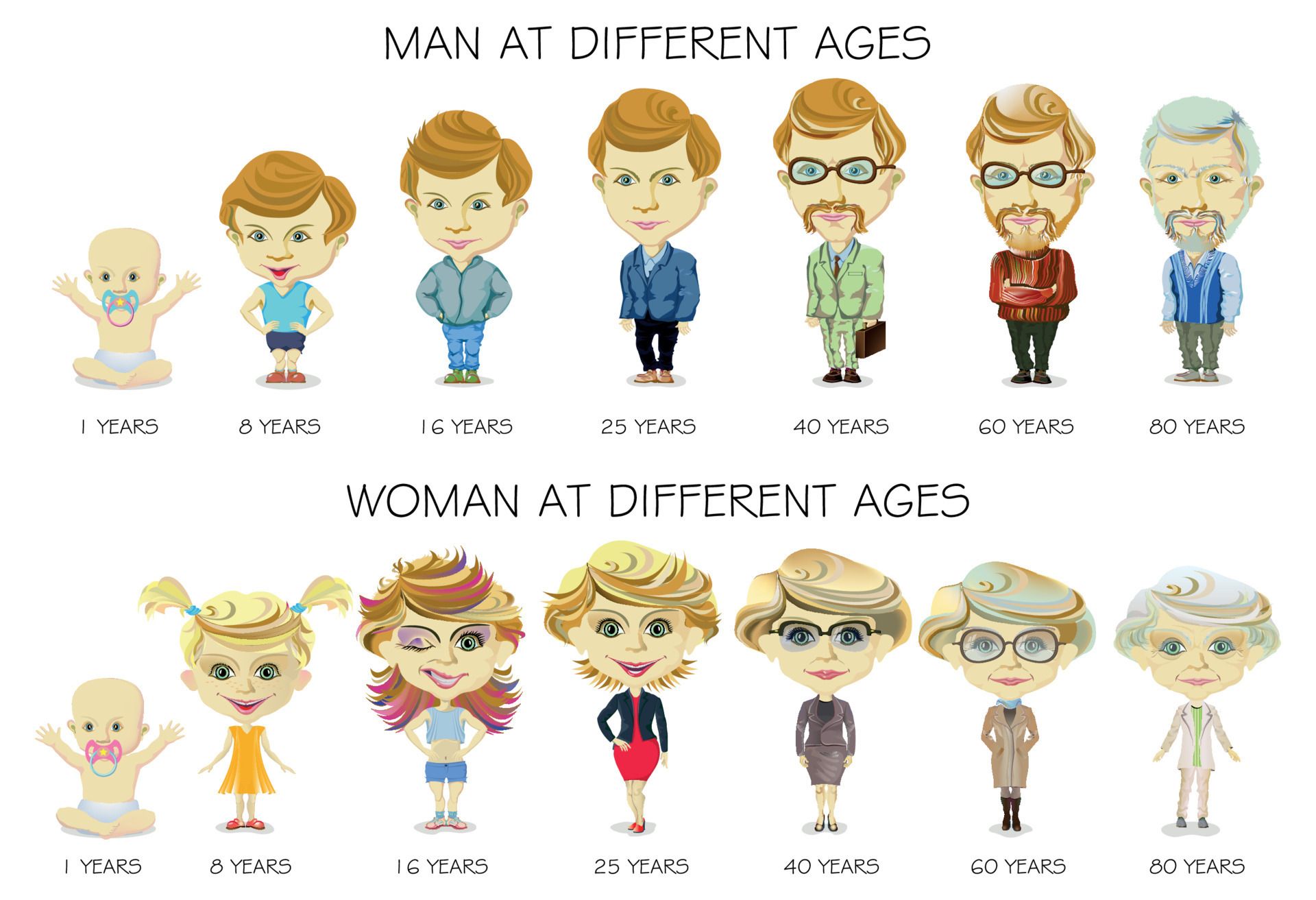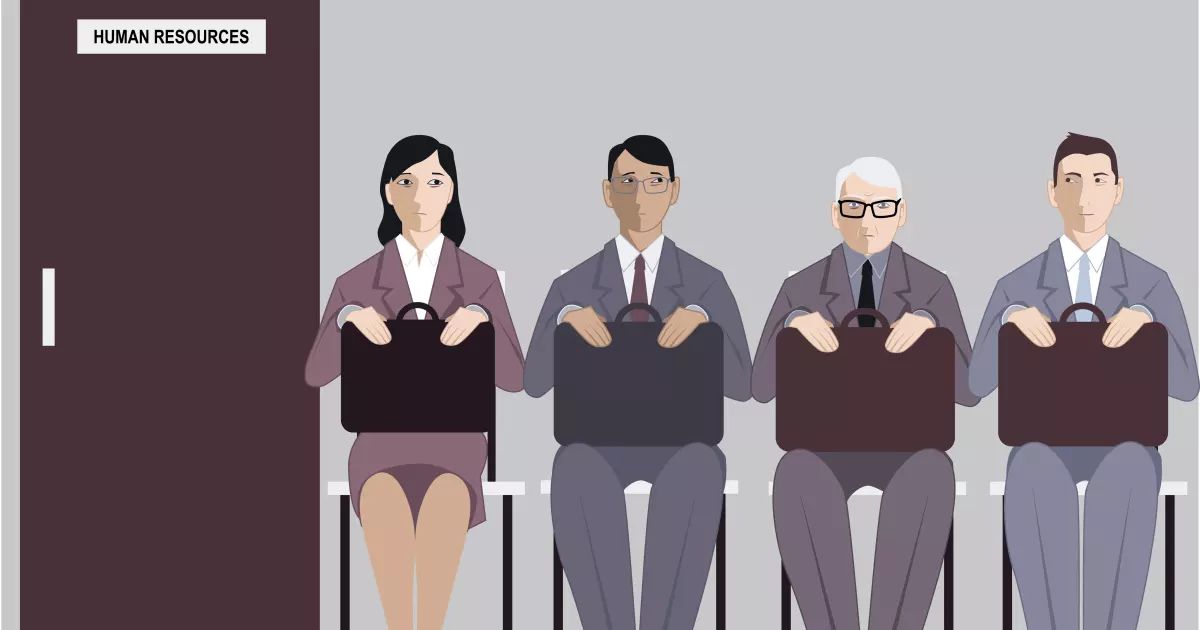
The relentless drumbeat of job rejections is all too familiar to Mark Porter, a 67-year-old Massachusetts resident who, over seven years, has navigated nearly 3,700 job applications. Each rejection, meticulously logged, represents another ‘kissoff in email,’ a stark reminder of his uphill battle in today’s job market. Porter’s personal struggle is not isolated; it resonates with countless older Americans caught in a perplexing, often disheartening, employment landscape.
Laid off from a full-time position in early 2018 at 60, Mark has since been unable to secure a permanent role, forcing him to rely on short-term contract work, the last of which ended in summer 2024. His career in payroll and accounting, including stints as a payroll specialist, accounting associate, and accounts receivable clerk, showcases extensive experience, yet it seems to count for little in his job search. This protracted unemployment has exacted a severe personal toll; Porter candidly stated, ‘I had to burn through my 401(k), and I had to burn through money that my mother left me.’ His current survival hinges on a monthly Social Security check, begun two years ago, providing him with ‘the only reason I have a roof over my head and food to eat.
Porter’s methodical approach to job searching, meticulously tracking every application since April 2017 in a Google spreadsheet detailing company name, job title, pay, location, and even the résumé version used, underscores his dedication and persistent efforts. Despite holding a bachelor’s degree from Boston College and possessing decades of work experience, his profound difficulty in landing interviews has led him to a troubling conclusion: he suspects his age is a major factor holding him back. He recalls job searching becoming noticeably more challenging in his fifties, a trend that alarmingly persisted even during the Great Resignation when job postings and hiring volumes surged.

Through conversations with others facing similar struggles, Porter encountered a theory suggesting that applicant tracking systems (ATS) might detect a candidate’s age based on certain résumé phrases, potentially disadvantaging older applicants. A professional résumé writer he hired about two years ago lent credence to this theory, advising him that ‘rewording will get you past a lot of these résumé readers that just toss résumés in the trash based on how old they think you are — by the tone of the way the résumé is written.’ Though Porter made these tweaks, he noted they ‘didn’t seem to boost his response rate from employers,’ indicating a deeper, systemic issue.
Mark Porter’s narrative is a potent illustration of the systemic challenges many older Americans now confront, as they grapple with finding meaningful employment, depleting their hard-earned savings, and witnessing their dreams of retirement recede further into the distance. Business Insider has amplified these voices, hearing from thousands of older Americans who struggle to afford life’s necessities, relying on limited savings and Social Security income. Hundreds have revealed they are still working full-time, have taken on part-time jobs, or are actively seeking employment to supplement their finances.
These individual struggles are compounded by a discernible cooling in the overall job market, which has seen the pace of hiring across US businesses slow to nearly its lowest in over a decade. While the unemployment rate for Americans aged 55 and older remains historically low, it has shown an uptick over the past two years, influenced by a confluence of factors ranging from pervasive economic uncertainty to the nascent impacts of AI adoption across industries. White-collar roles, including the very payroll and accounting positions Mark Porter is pursuing, have been particularly affected, with a significant decline in accounting job postings on Indeed since 2022.
Beyond the specter of ageism, financial realities have also interwoven with Porter’s employment woes. A few years prior, a promising interview for a financial services role was abruptly halted when a credit check revealed his active bankruptcy, a consequence of accumulated credit card debt used to cover living expenses while unemployed. The company cited his bankruptcy as a complication for a role involving financial securities, immediately ceasing the interview process; Porter now optimistically hopes to re-engage with them once his bankruptcy concludes.
This plight underscores a broader societal challenge, particularly as the share of seniors aged 65 and older in the U.S. working-age population is projected to soar from approximately 19% currently to 29% by 2060, nearing parity with younger age groups. This demographic shift, coupled with lower employment among those over 65, presents ‘fundamental public policy challenges,‘ primarily by elevating the ‘dependency ratio’—the proportion of non-workers to workers—and decelerating overall labor force growth.
Policy efforts to bolster the labor supply of older Americans have traditionally centered on Social Security reforms, such as reducing benefits for early claimants and raising the full retirement age, along with changes to taxation of earnings post-benefit claim. However, the efficacy of these supply-side reforms risks being ‘thwarted… by age discrimination in labor markets,’ creating a ‘doubly problematic’ scenario. If businesses fail to respond to the policy-induced increase in older labor supply by hiring, it could ironically lead to even more stringent policy reforms that would further adversely affect older workers. Current anti-discrimination policies, heavily reliant on private litigation for enforcement, may prove ‘ineffective at reducing or eliminating age discrimination in hiring,’ largely due to the difficulties in mounting class action lawsuits and the often-minimal economic damages from hiring discrimination.
The anecdotal evidence, such as Mark Porter’s experience, is powerfully corroborated by a growing body of data and expert analyses. A 2024 survey published by Harris Poll and the American Staffing Association revealed that a striking 78% of baby boomers believe their age will be a contributing factor when being considered for a new position, and 53% suspect their age has already limited their career opportunities. These findings underscore a pervasive sentiment among older workers, hinting at a deep-seated bias within the hiring process.

Further illuminating this issue, the AARP reports that ‘over 90% of workers aged 50+ report age-related bias during their job searches,’ a statistic that paints a grim picture of the realities faced by this demographic. The economic cost of this discrimination is staggering, estimated by the AARP to be $850 billion annually to the U.S. economy, a figure projected to climb as high as $3.9 trillion by 2050, highlighting the profound economic implications of ignoring this crisis. The Work & Jobs Data Series on age discrimination consistently shows that nearly one in six adults aged 50-plus, actively working or seeking employment, reported not being hired for a job within the past two years specifically because of their age, marking an increase from previous waves.
The persistence of age discrimination in the workplace is further evidenced by research indicating that ‘about two in three adults ages 50-plus in the labor force (64%) think older workers face age discrimination in the workplace today,’ with an overwhelming 90% of them believing it is common. This extends beyond hiring to promotions, where ‘just over one in ten continue to report that they have been passed up for a promotion or chance to get ahead because of their age.’ Interestingly, while negative comments about older co-workers’ or one’s own age in the workplace have seen a slight decrease since the first wave, the fundamental belief in widespread age discrimination remains consistent.
The U.S. Government Accountability Office (GAO) has also weighed in, analyzing labor market outcomes for older workers between 2017 and 2023. Their analysis of Current Population Survey data indicated that while unemployment for workers aged 55-64 spiked to 12.6% in April 2020, it returned to its pre-pandemic level of 2.2% by April 2023. However, older workers were disproportionately likely to report unemployment due to job loss or layoff and were more prone to exiting the labor force by retiring, in contrast to younger workers who more often cited temporary jobs ending or voluntary departures.
Regarding personal finances, the GAO found that older workers’ finances generally held steady during the pandemic, with Social Security retirement benefit claims initially decreasing before exceeding pre-pandemic levels in late 2020. Retirement account prevalence and value among households aged 55 or over also remained relatively stable between 2019 and 2022, though significant disparities by income quartile, education, race, and gender persisted. These findings, while offering some stability, do not fully negate the individual financial devastations like Mark Porter’s, who was forced to ‘burn through my 401(k), and I had to burn through money that my mother left me’ to simply stay afloat.

To truly understand the presence and nature of age discrimination, economists have meticulously developed ‘audit’ or ‘correspondence’ studies, mimicking controlled experiments to establish evidence of bias. These studies create artificial job applicants with identical qualifications, differing only by the characteristic under investigation—in this case, age. The goal is to isolate whether differences in hiring outcomes are solely attributable to group membership, rather than other variables.
A groundbreaking field experiment, designed to overcome past study biases and specifically test for discrimination against older workers near retirement age, yielded compelling results. Researchers created realistic, fictitious résumés for young (aged 29–31), middle-aged (aged 49–51), and older (aged 64–66) job applicants. These profiles were then submitted to over 13,000 positions in 12 cities across 11 states, resulting in more than 40,000 applications—a massive scale unparalleled in previous studies.
The overall callback rate consistently showed a pattern: ‘higher for younger applicants and lower for older applicants, consistent with age discrimination in hiring.’ This broad finding was further nuanced by gender. For female applicants to administrative and sales jobs, the callback rate was ‘highest for the young applicants, lower for the middle-aged applicants, and lowest for the old applicants.’ Specifically, older female applicants for administrative jobs experienced a ‘47% lower callback rate’ compared to young applicants, while in sales, the difference was a ‘36% lower callback rate,’ both statistically significant and substantial.
Read more about: Artificial Intelligence: Balancing Innovation with Risk in the Modern World

For male job applicants across sales, security, and janitor roles, a lower callback rate for older men was also observed, though the ‘age pattern is not as consistent or pronounced, and in some cases the estimated differences between the young and old groups are not statistically significant.’ In sales jobs, where direct comparison with women’s results was possible, older male applicants faced a ‘slightly smaller but still statistically significant 30% drop’ in callback rates compared to young men. This experimental evidence leads to three critical messages: age discrimination in hiring affects both women and men, it is more severe for older applicants near retirement age, and ‘women experience more age discrimination than men do.
The experiment suggests a potential reason for the heightened discrimination against older women: ‘applicant appearance matters in our sample of low-skilled jobs, and the effects of aging on physical appearance are evaluated more harshly for women than for men.’ This layer of bias highlights the complex interplay of age and gender in the job market, adding another formidable barrier for older women seeking employment. Such findings underscore the urgent need for ‘demand-side barriers to significantly extending work lives’ to be reduced, as they directly hinder employment of older workers amidst the challenges of an aging population.
Despite these stark realities, there’s a compelling counter-narrative: older workers bring immense, often untapped, potential to the workforce. Contrary to outdated stereotypes that paint older individuals as less capable, less adaptable to new technologies, or unwilling to learn new skills, they offer ‘stability, proven problem-solving skills, and a depth of industry insight that can’t be matched by someone just starting out.’ The sheer economic contribution of those over 50, dubbed the ‘longevity economy,’ is a massive $8.3 trillion annually to the U.S. economy, an undeniable force.
Read more about: Artificial Intelligence: Balancing Innovation with Risk in the Modern World

Yet, when older workers strive to remain in or re-enter the workforce, they frequently encounter systematic hurdles, notably ‘the lack of adequate reskilling and upskilling programs for this demographic.’ A prime example is the Senior Community Service Employment Program (SCSEP), the sole federally funded workforce initiative specifically designed to assist unemployed Americans aged 55 and older who meet specific poverty guidelines. Despite its crucial mission, SCSEP ‘serves less than 0.5% of eligible workers,’ with its annual enrollment of approximately 55,000 participants falling far short of the estimated 6 to 8 million Americans who meet the criteria. This represents, in expert opinion, a profound ‘underinvestment in a rapidly growing demographic,’ betraying the very potential it aims to harness.
Furthermore, concerns linger that other workforce training programs, such as those under the Workforce Innovation and Opportunity Act (WIOA), ‘disproportionately funneling Black and Latino workers into low-paying, low-skill jobs,’ continue to overlook or inadequately serve older workers. If the nation is to effectively address the crisis of ageism, a substantial investment in the reskilling of older Americans is not merely beneficial but a ‘national imperative.’ Intriguingly, a vast majority, ‘92% of workers over 50 want opportunities to learn new skills, including digital literacy,’ directly refuting the stereotype that older workers are resistant to new knowledge or adaptation.
The future of work, indeed, mandates a holistic approach to training and inclusion, one that unequivocally acknowledges the intrinsic value of older workers. Currently, a mere ‘8% of organizations say they are actively working to integrate age as a part of their talent strategies,’ a figure that highlights a significant gap between the undeniable demographic shift and current corporate practices. For businesses to truly thrive and contribute to broader economic growth, ‘age-inclusive practices must become the norm, not the exception,’ transforming workplaces into dynamic intergenerational teams.
Business leaders keen on fostering such an environment can strategically focus on three core approaches, as outlined by experts advocating for age-inclusive workplaces. The first is to ‘Commit to an intergenerational workforce,’ starting with a visible, unequivocal commitment to age diversity that highlights the myriad benefits of combining different generations within a team. Research reinforces this, showing that organizations with inclusive cultures are ‘1.7 times more likely to be innovation leaders in their market and report a 2.3 times higher cash flow per employee’—compelling economic incentives for embracing age diversity. A proactive stance not only builds a culture where all employees are valued but also drives innovation and resilience.
Read more about: A New Era for Retirement Savings: How Trump’s Order and SECURE 2.0 Are Reshaping Your 401(k) Options

The second critical strategy involves conducting thorough ‘Audit training and upskilling programs’ to ensure they genuinely meet the needs of employees at every career stage. A concerning disparity exists, with a recent TD World report indicating that ‘only approximately 50% of workers over 55 have been offered job retraining in the past three years,’ a stark contrast to ‘almost 85% of workers aged 18 to 34.’ This gap persists despite ‘mid-career and older workers’ strong interest in learning new skills,’ underscoring a missed opportunity for organizations to leverage experienced talent.
Finally, businesses must ‘Establish age-inclusive hiring practices’ by meticulously reviewing recruitment processes to systematically eliminate age bias. This involves scrutinizing job descriptions for age-coded language and overhauling hiring protocols. Implementing diverse interview panels and utilizing standardized questions can significantly ‘mitigate unconscious bias,’ with studies demonstrating that structured interviews are ‘50% more effective in predicting job performance than unstructured ones,’ while also fostering consistent evaluations and reducing discrimination. By adopting these strategies, organizations can not only enhance team performance but also significantly contribute to economic growth, as ‘building intergenerational workforces and giving older employees greater opportunities to work could raise GDP per capita by 19% over the next three decades.
Mark Porter’s seven-year odyssey through a labyrinthine job market is more than just a personal tale of struggle; it is a powerful microcosm of a pervasive societal challenge that demands our immediate, collective attention. His story, alongside compelling data and expert analyses, lays bare the inconvenient truth that the U.S. is, in too many ways, failing its older workers, overlooking their invaluable contributions and allowing a talent pool rich in experience and dedication to remain tragically underutilized.

The persistent shadow of ageism, evident in every ‘kissoff in email’ and every denied opportunity, is not merely an issue of fairness; it is an economic drag, costing billions and hindering national prosperity. The evidence is clear: older workers possess a deep well of skills, a strong desire for continuous learning, and an unwavering commitment to contribute. Ignoring this vital demographic, particularly when women disproportionately bear the brunt of age discrimination, is not merely short-sighted; it is detrimental to the very fabric of our economy and society.
It is time to dismantle the outdated stereotypes, to move beyond the assumption that age equates to obsolescence. We must champion policies that not only protect older Americans from discrimination but actively foster environments where their wisdom and experience are sought after and integrated. This necessitates a fundamental shift in perspective for businesses and policymakers alike: a renewed commitment to intergenerational workforces, robust investment in reskilling and upskilling programs for all ages, and the implementation of truly age-inclusive hiring practices that see potential, not just years.
Read more about: Let’s Talk Madonna: Why The Queen of Pop’s Iconic Reign Continues to Challenge Every Expectation, Age Included
As we look towards a future where one in four workers is projected to be over 55 by 2028, and the dependency ratio rises, our ability to adapt and embrace the full spectrum of talent will define our economic resilience. Can we truly afford to allow an entire generation of capable, willing individuals to struggle on the sidelines? The cost of inaction is too high; the potential rewards of embracing our older workforce are immeasurable. Let us forge a future where age is not a barrier, but a testament to experience, a catalyst for innovation, and a cornerstone of a thriving, inclusive economy for everyone.




